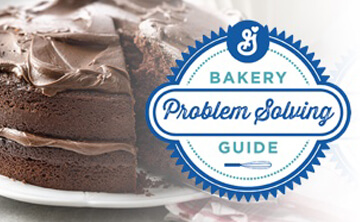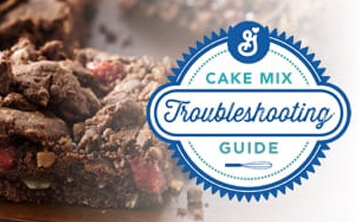Frequently Asked Questions
-
Q1: What is the alternative to using eggs in a cake?
One of the common alternatives to using egg in a cake is to use curd.
-
Q2: What is the difference between dry yeast & fresh yeast?
Dry yeast is obtained by pressing and drying fresh yeast, making the moisture content in the yeast dormant. You only require half the amount of dried yeast as compared to fresh yeast. Dry yeast has a much longer shelf life than fresh yeast and it only activates when mixed with warm water.
-
Q3: Why do cookie formulas state cookies should cool on the sheet instead of removing them to racks or plates?
Cookies have small dough mass that continues to bake on the sheet after being removed from the oven. Customers love cookies, particularly gourmet cookies, with a chewy consistency. To obtain this consistency, take the cookies out of the oven when they’re slightly underdone, and leave them to cool on the sheet.
-
Q4: What is the most important difference between cake and fudge- type brownies?
Cake-type brownies taste like cake whereas fudge-like brownies taste like chocolate candies. The main difference is in the percent of flour in both. To make cake-like brownies, use more flour.
-
Q5: What is the difference between extensibility and elasticity?
Extensibility and Elasticity are flour functions that are used to measure the dough rise, dough volume, and shape, during and after baking. Extensibility means the way dough rises during fermentation. Elasticity means the exact degree of the dough volume and shape during and after baking. The amount of gluten-forming proteins in the flour affect these flour functions. To obtain a stronger dough, use the flour that has more protein content.
-
Q6: Which oil is best for cake mix?
It is preferable to use any odorless oil like sunflower or palm oil.
-
Q7: When baking muffins, is there an advantage to lining the tin with paper cups over pouring batter directly into a greased tin?
To obtain a more portable product, use paper cups or liners. They help improve shelf life and preserve moistness. To obtain a product for serving at the table in a basket, use a greased tin.
-
Q8: I don't understand the different machine mixing methods: short, improved, and intensive
The short mix method involves the lowest mixer speed for a small amount of time, like six minutes It produces the least developed gluten structure, the softest dough consistency, and the most flavorful breads.
The intensive mix method involves higher mixer speed and longer amount of time. It produces a fully developed gluten structure, stiff consistency, and the least flavor.
-
Q9: Are there any changes in the texture of an eggless cake as compared to premix with egg?
Generally, egg cakes have a very light texture as compared to eggless cakes. But the pre-mixes with egg and without egg do not have much of differences.
-
Q10: Can we use olive oil for bread?
Olive oil can be used in place of normal oil or fat.


